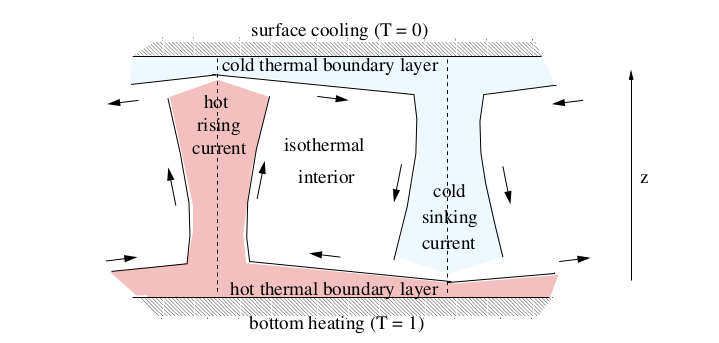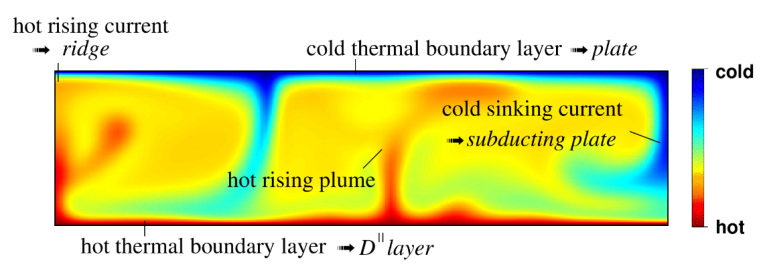Convection
Convection describes material transport within gases and liquids. In the case of thermal convection, temperature differences in the system lead to density differences. This results in buoyancy and flow of material.

Differences in density can also be caused by different material properties. In the case of oceans, for example, salinity plays an important role in addition to temperature differences due to solar radiation. This is called thermohaline convection or double-diffusive convection.
The Earth's mantle has a special role; although it consists of solid rock, it exhibits creep properties on long time scales. Due to the temperature difference between the underlying hot core and the cooler surface, convective flow also occurs in the mantle. This process is closely linked to the observation of plate motion at the surface.


